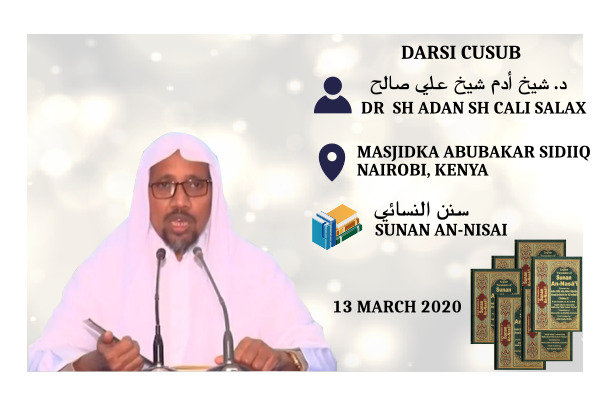Beyond the Hague: Revisiting the Maritime Dispute between Somalia and Kenya
August 31, 2019 - Written by Editor
The hearing of the maritime boundary dispute between Kenya and Somalia is scheduled to start on September 9th and last to September 13th at the International Court of Justice (ICJ), located in the Hague, Netherland. For Kenya, the boundary line lies parallel to the line of latitude. This would potentially provide Kenya an enormous share of the maritime area, granted that Kenya has already provided mining licenses to international oil companies such as Anadarko Petroleum (USA), Eni (Italian), and Statoil (Norwegian). Somalia wants the boundary to continue as far as the southeast as an extension of the land border.
In August 2014, Somalia begun legal action against Kenya in the ICJ regarding the maritime dispute area. The country spent millions of dollars to hire elite law firms to represent their case and even recruited local professionals who specialized in geographic information systems (GIS), purchased this GIS software to simulate the maritime cases of Kenya and Somalia. The purpose of this was to identify overlapping claims and to also delimit theoretical maritime boundaries between the two countries. Furthermore, they created multiple sketch maps supporting their argument. In addition to this, the Somali Federal Republic hired highly respected consultant, paying them more than $15,000 per hour to work closely alongside local expert in order to produce credible argument. The Somali government at that time accomplished all this without any use of posturing, chest-thumping, photo op, fanfare, and amplifying social media.
The court focused on two main issues, which consisted of the legal status of the Memorandum of Understanding (MOU) and then its underlying content. The Federal Republic of Somalia protests the validity of MOU. Unfortunately, the court issued a ruling specified that MOU is a valid vehicle for a treaty and is a legally binding document. The Court also rejected Kenya’s argument, which stated the MOU is an agreement or rejected its commitment to solve the dispute. Interestingly, the text of the MOU was drafted by neither country but rather by the Norwegian Ambassador as part of Norway’s assistance to African countries’ legal development. Currently, Kenya seeks settlement out of court. Somali leaders refuse to engage their Kenyan counterpart, ultimately defending territorial integrity without diplomatic dialogue.
The territorial integrity and resources available in disputed areas carry political implication that could potentially ruin careers. In deep-water, with no boundaries beneath the ground, the principle of fluid flow in porous medium may outweigh the principle of territorial integrity. It seems the fate in disputed area is now in the hands of the ICJ. The ICJ plans to define the boundary as allowed by the United Nations Convention on the Law of the Sea (UNCLOS) and other international sea laws. After the decision by the ICJ, we will see the beginning of both mediation and diplomatic warfare, in the hopes that this will bring both parties to the bargaining table.
We hope that the current Somali government will have an apparent post-Hague strategy is in place. The court is expected to resolve who will control the large deposit area of hydrocarbons and ultimately own most of the 42,000 square Kilometer. This will greatly shape the Kenyan-Somali relationship. Now is the right time to analyze the implications, challenges, and consequences due to such anticipated outcomes.
The Stakes at Play in this Dispute Somalia lies at the top of the fault line that runs down from East Africa to Southern Africa. Geological play is identical to Mozambique and Tanzania which provides hydrocarbon production. Following the success in Mozambique and southern Tanzania, coupled with the UNCLOS deadline of coastal state members to make submissions to the Commission on the Limits of the Continental Shelf (CLCS) on the limits of their continental shelf beyond 200 Miles. Kenya extended boundary eastwards in waters claimed by Somalia, attracting leading International Oil Companies to explore and develop large share of disputed area, utilizing MOU as an agent to take Somalia’s resources.
The disputed area consists of 42,000 square Kilometer, which is divided approximately 15 different geographical blocks. The current Somalia block size is 5000 square Km (equivalent to 1,235,527 Acres per block) which is unusually large. Common offshore well spacing is about 0.75 km to 1.5 km between wells. Offshore drainage area of a single well could be 80 Acres minimum to a section or 640 acres at maximum. Assuming designated drainage area of single well is a section or 640 Acres with 75 percent efficiency, then a single block could be drilled about 1400 wells at minimum.
The average life of oil and gas well is approximately 30 years. However, as technology improves, the life of the wells can be extended by an additional 20 years. Offshore blocks vary in size, evident by how a single US block is about 23 square km (5,680 acres). In other parts of the world, a block is approximately 150 square km (37,066 acres) in shallow water to 750 square km (185,330 acres) in deep water. This will vary widely from country to country.
Legal and Operational Challenges and their Implications Kenya is avoiding the legal path, while Somalia may struggle with the operational challenge of the development of oil and gas. The court verdict may not end maritime dispute but eventually will facilitate discussion and negotiation between Kenya and Somalia. There is a possibility of unintended consequences that Kenya might face a risk to remain landlocked should they lose the case at ICJ. If one wants to limit Kenya’s access to the sea, permission may be needed for their ships from neighboring countries such as Somalia and Tanzania. No party involved wants this to happen, including Somali government.
Since Somalia sued Kenya at the International Court of Justice in August 2014, the trajectory of the case and behavior of Kenyan government has drastically shifted. The Kenyan government has remained frustrated, under pressure, requesting mediation, negotiation, and dialogue. They underestimated the capacity of Somali government to respond, trying to bully a weak Somali Federal Government. Kenya is not in favor of legal avenue.
Operational aspect on offshore oil and gas development law /rule capture is used for when oil fields are in maritime areas of overlapping claims. The rule is defined as follows,” One country can start drilling and exploiting a shared oil or gas reservoir without the consent of another country”. If Kenya drills its own land to produce oil that flows into their wells from Somalia, then the oil becomes their property.
Both countries had a legitimate drainage from the common reservoir or pool. Kenya should not have the right to drill in Somali waters, but they aren’t accountable if the oil they produce came from Somalia.
Oil and gas deposits often reach across national borderline that entire deposit may be exploited, fully or in partial, from either side of the boundary line. This aspect of oil and gas has been a major cause of disputes, conflicts, and even wars in many parts of the world, which therefore is subject to joint development agreements (JDA). There is no international law that requires for joint development agreements. Countries have an obligation to cooperate in good faith to ratify an agreement for the development of oil fields. JDA was adapted in many countries as a solution of their offshore dispute.
Therefore, both countries would be better off by sharing resources and working together in hydrocarbon exploitation.
ConclusionIn August 2014, Somalia government at time, began legal action against Kenya in the ICJ in maritime dispute. Protecting territorial integrity of the country with little or no resource at all. They exceeded nations expectations by challenging mighty Kenyan government with unlimited resource including their military power occupied southern part of Somalia. History will judge them kindly.
September 9 until September 13, 2019, ICJ will hear the maritime case. The ICJ plans to define the boundary as allowed by the United Nations Convention on the Law of the Sea (UNCLOS) and other international sea laws. The court verdict may not end maritime dispute but eventually will facilitate discussion and negotiation between Kenya and Somalia. The ICJ will decide on legal issue but as expected will not address operational issue such as resources exploitation in overlapping area.
Oil and gas deposits often reach across national borderline. It has been a major cause of disputes, conflicts, and even wars in many parts of the world. Therefore, it is subject to joint development agreements (JDA) both countries would be better off by sharing resources and working together in hydrocarbon exploitation Kenya is not in favor of legal avenue knowing potential risk associated with it. While current Somali leaders’ mantra is winning a battle but losing the war. They lacked courage to make a deal, concerning it may end their political ambition or political career. However, we expect ICJ’s decision will bring both parties to the bargaining table.
Dr. Ahmed Ali Yusuf is a Senior Reservoir advisor, working in Houston, TX. Specialize reservoir management, reserve estimate, field development, reservoir modelling, production forecast, and production optimization. His professional background includes major oil and gas operators, oil field service companies and in academia. In addition, he is a licensed engineer in state of Texas, he fulfils roles of Consultant, Reservoir Engineer, Petroleum Engineer, Production Optimization Engineer, and well Stimulation Expert.
Dr. Yusuf obtained: B.S industrial Engineering from Mikkeli University of Applied Sciences in Finland, M.S. in Offshore Oil & Gas Technology from Alborg University, Denmark, M.S. in Petroleum Engineering from West Virginia University, and Ph.D. in Petroleum Engineering from West Virginia University.
Ahmed Cali Yuusuf
Halgan.net

.gif)





